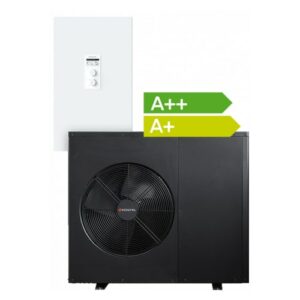Understanding heat pumps
Understanding Heat Pumps:
Your Comprehensive Guide to Efficient Heating and Cooling
In today’s world, energy efficiency and environmental responsibility are paramount considerations for homeowners and businesses alike. As traditional heating and cooling systems continue to evolve, one technology has emerged as a standout solution: the heat pump. But what exactly is a heat pump, and how does it work? In this comprehensive guide, we’ll delve into the inner workings of heat pumps, their benefits, and why they’re becoming increasingly popular for both residential and commercial applications.
What is a Heat Pump?
At its core, a heat pump is a highly efficient HVAC (Heating, Ventilation, and Air Conditioning) system that works by transferring heat from one place to another rather than generating it directly. Unlike conventional furnaces and air conditioners, which rely on burning fuel or electricity to create heat or cool air, respectively, heat pumps use a refrigeration cycle to move heat from one location to another. This innovative technology allows heat pumps to provide both heating and cooling functions, making them versatile solutions for maintaining indoor comfort year-round.
How Does a Heat Pump Work?
The operation of a heat pump revolves around the principles of thermodynamics, specifically the transfer of heat from areas of high temperature to areas of low temperature. Regardless of whether it’s heating or cooling mode, the basic components and process remain the same:
- Evaporation: In heating mode, the refrigerant within the heat pump’s indoor coil evaporates as it absorbs heat from the surrounding air.
- Compression: The compressor then increases the pressure of the refrigerant vapor, raising its temperature and energy level.
- Condensation: Next, the hot, high-pressure refrigerant flows through the outdoor coil, where it releases heat to the outside air and condenses back into a liquid state.
- Expansion: As the refrigerant passes through the expansion valve, its pressure decreases, causing it to cool down and expand.
- Reversal: In cooling mode, the cycle is reversed, with the heat pump extracting heat from indoor air and releasing it outdoors.
Benefits of Heat Pumps:
- Energy Efficiency: By transferring heat rather than generating it, heat pumps can deliver significant energy savings compared to traditional heating and cooling systems.
- Versatility: Heat pumps offer both heating and cooling capabilities in a single system, eliminating the need for separate furnaces and air conditioners.
- Environmental Friendliness: With lower energy consumption and reduced greenhouse gas emissions, heat pumps are environmentally responsible choices for heating and cooling.
- Consistent Comfort: Heat pumps provide consistent indoor temperatures year-round, ensuring comfort and convenience for occupants.
- Rebates and Incentives: Many governments and utilities offer incentives and rebates for installing energy-efficient heat pump systems, further offsetting costs.
Conclusion:
In conclusion, heat pumps represent a cutting-edge solution for efficient and sustainable heating and cooling. By understanding the principles behind their operation and the benefits they offer, homeowners and businesses can make informed decisions about implementing this innovative technology. Whether you’re looking to reduce energy costs, minimize environmental impact, or enhance indoor comfort, a heat pump could be the perfect solution for your HVAC needs.







